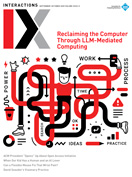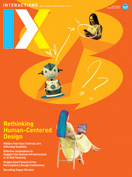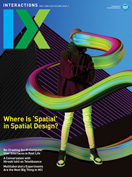Authors: Alice Ashcroft, Zoe Detko
Posted: Wed, February 19, 2025 - 12:20:00
Within human-computer interaction, user experience, and interaction design, there’s a pressing need to reflect on how our technological advancements intersect with environmental and social factors. Our recent contribution to the ICT4S zine, titled “We Can’t Fix It All” “Okay, But What If We Try?” explored these intersections, drawing parallels between sustainability and social access in HCI through the lens of the source-pathway-receptor (SPR) framework. This blog aims to synthesize those reflections and explore how HCI can adopt more equitable and sustainable practices.
The SPR framework is a well-established concept in environmental science used to understand pollution linkages. It consists of three key components:
· Source: the origin or point of emission of pollutants.
· Pathway: the route through which pollutants travel.
· Receptor: the entity that is exposed to and potentially affected by the pollutant.

Parallels were created through illustrations in the publication to show the similarities between physical environmental differences and technological impact and its compounded affect.
By applying this framework to HCI we can better understand the interaction between digital technologies and their environmental and social impacts.
In HCI, recognizing the interaction between digital technology and environmental impact can reveal how reducing negative environmental impacts can simultaneously enhance social equity. For example, designing websites with fewer greenhouse gas emissions benefits not only the environment, but it also aids individuals with slow Internet connections or limited data plans. A single visit to a 30 MB homepage could consume an entire day’s worth of data for someone on a 1 GB monthly plan and emit the equivalent of 12 grams of carbon dioxide [1].
To mitigate these effects, strategies such as reducing image sizes, avoiding auto-playing videos, minimizing automatic chatbot usage, and not integrating live social media feeds can be effective. Images are the biggest source of GHG emissions on websites [2]. Switching image formats from JPEG, PNG, and GIF to WebP can significantly reduce emissions and data requirements [3]. To reduce emissions associated with digital content consumption, all video and image files should be compressed using appropriate minimization tools. This practice decreases the carbon footprint of viewing, and it also improves loading times and overall user experience.
The SPR framework helps us understand that every stage in the digital technology lifecycle can have unintended environmental and social consequences. For instance, cloud computing, often seen as a cost-effective solution, has substantial environmental impacts due to the energy required to send data across the globe.
Moreover, just as polluted water can force communities with limited resources to drink unsafe water, marginalized groups often have no choice but to use high-emission technologies to access essential services. This highlights how choice and privilege are intertwined, affecting both environmental sustainability and social access.
Bioaccumulation and Intersectionality
Bioaccumulation and intersectionality offer powerful metaphors for understanding how environmental and social impacts compound over time. Bioaccumulation occurs when contaminants build up in organisms, becoming more concentrated than in their surrounding environment. Similarly, theoretical intersectionality describes how overlapping social identities (e.g., race, gender, class) can result in compounded disadvantages.
To bring this back to environmentalism, for example, pollutants in a river can magnify up the food chain, with small fish accumulating pollutants and then being eaten by larger fish, eventually affecting top predators like polar bears. This mirrors how multiple marginalized identities can compound to create significant barriers to access and equity in technology.
Lessons Learned
By examining these parallels, we can derive several key lessons for HCI.
Consider environmental impact. Every stage of technological development has environmental repercussions. Design choices that reduce GHG emissions also enhance the accessibility of digital systems for those with limited data and slower Internet connections. Throughout the technology development life cycle, from design to end-of-life, priority should be placed on environmental impact by focusing on energy efficiency, resource minimization, and low-bandwidth alternatives. It is important to implement efficient coding practices and design user interfaces that reduce power consumption. To keep on top of this, there is a need to continuously monitor, test, and improve the technology’s environmental performance while educating users on energy-efficient usage.
Understand social access. Just as environmental impacts affect marginalized communities disproportionately, technological developments do the same. It’s crucial to design with an awareness of how these technologies will impact all users, especially the most vulnerable. To put this into practice, organizations should conduct comprehensive user research with diverse groups, develop inclusive personas and scenarios, and perform thorough impact assessments. It’s crucial to design for flexibility and conduct regular audits to ensure ongoing improvement and transparency in creating accessible and inclusive technology.
Promote inclusivity. Physical accessibility should always be a priority in HCI. However, it’s equally important to address social access by considering how various intersecting identities can influence users’ experiences and access to technology. We can do this by following established accessibility guidelines and standards and by conducting usability testing with users who have diverse physical needs. It is also important to analyze how different intersecting identities (e.g., race, gender, age, and socioeconomic status) may impact technology access and use, and design interfaces and experiences that are inclusive across diverse social identities. It is also important to provide training on both physical accessibility and social access considerations to developers to help teams consistently address these factors. Once again, user research is vital, and including participants from diverse backgrounds and with varied intersecting identities can capture nuanced social experiences.
Conclusion
HCI professionals have a unique opportunity to drive both environmental and social change through thoughtful, inclusive design. By leveraging the SPR framework, we can better understand and mitigate the environmental impacts of our technologies while promoting greater social equity.
The parallels between sustainability and social access in HCI are clear: Both require a holistic understanding of how systems interact with the world around them. As we move forward, let’s strive to design technologies that are not only efficient and innovative but also equitable and sustainable for all.
Endnotes
1. Lowe, S. Council website emissions. Open Innovations. May 28, 2021; https://open-innovations.org/blog/2021-05-28-council-website-emissions
2. Greenwood, T. Sustainable Web Design. A Book Apart, 2021.
3. Hiskey, T. How I decreased my website’s carbon emissions by 88%. Medium. Nov. 7, 2022; https://tomhiskey.medium.com/h...
Posted in: on Wed, February 19, 2025 - 12:20:00
Alice Ashcroft
View All Alice Ashcroft's Posts
Zoe Detko
View All Zoe Detko 's Posts







Post Comment
No Comments Found